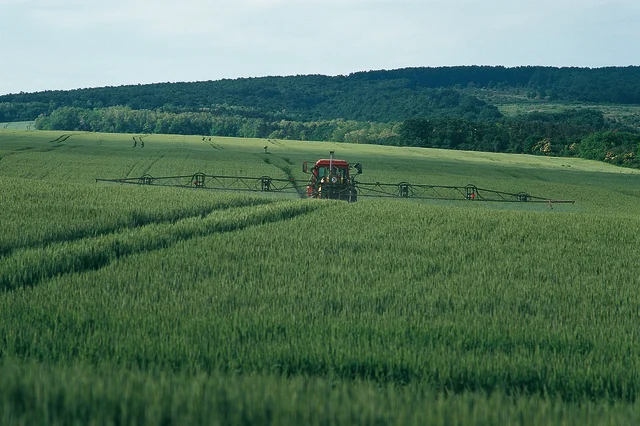Published on 6th May 2020
Weed Management
Take full advantage of extra grassweed control opportunities

Take full advantage of land left uncropped following the wet winter, together with any poorly established areas of spring cropping, to get on top of problem grassweeds as well as correcting any soil structural damage this summer, advises Bayer technical specialist, Roger Bradbury. “Uncropped land provides the perfect opportunity to deal with weeds like black-grass, brome and ryegrass that have thrived in a season in which control has proved difficult in many cases,” he points out. “But treatment needs to be carefully integrated with remedial soil working and any summer covers established to assist with soil management.
“Particularly poor and patchy spring crop establishment from a combination of winter soil damage and a bone-dry April also offers a grassweed control opportunity that shouldn’t be missed. After all, there’s little to lose in terms of crop value from spraying-off the thinnest, weediest areas and so much to gain in reducing weed seed return. “The fact that you can stop the return of up to 30,000 black-grass seeds/m squared by summer glyphosate spraying makes it highly cost-effective if you have to sacrifice parts of a 7t/ha winter wheat crop let alone areas of spring barley delivering less than half of this.” Whether treating grassweeds in uncropped land or patchy spring crops, Mr Bradbury insists that the same two key control principles apply. First and foremost, it’s important not to spray them during stem extension when the flow of assimilates is so strongly upwards as this will lead to poorer overall kill and disappointing results. Equally, spraying needs to be ahead of ripening to avoid adding to the weed seed reservoir in the soil.
“Annual grasses may start flowering in April but it can take six weeks for the first seeds to mature and the earliest heads tend to set the fewest viable seeds,” explains Mr Bradbury. “For every flowering stem in April and early May there will be many more tillers in stem extension that can regrow after earlier-than-ideal treatment too.
“So, the best approach is to spray at any time from full ear emergence until just before the seeds are ripe and the foliage begins to die back. As a rule, with black-grass you have a good three weeks between seed head emergence and the first seeds becoming viable here.
“While our trials show this window is definitely smaller with bromes, in most cases holding-off on glyphosate spraying until mid-June will pay dividends. And it will certainly allow the best targeting of weed patches in growing crops.
“Where perennial grasses and hard-to-kill broadleaved weeds are more of a problem than annuals it’s advisable to delay treatment to July,” he adds.
Mr Bradbury accepts that destroying summer covers in June may limit their soil conditioning value. However, he points out that this will ensure there is enough time to manage covers containing harder-to-kill species like legumes, in particular, ahead of OSR drilling. He is adamant too that effective grassweed control is a far greater priority on problem ground than any further soil improvement gains that may come from cover crop rooting. He points out that June spraying of uncropped land will also give the widest possible window for remedial sub-soiling under the most favourable ground conditions. And, it should allow a good stale seedbed to be set-up with light cultivation and sprayed-off to reduce the weed reservoir from previous seasons even ahead of oilseed rape. “As well as getting the timing right, of course, it’s important to use the right rate of a robust glyphosate for summer spraying,” he stresses. “For the best control of annual grasses, I’d strongly recommend 1080 g ai/ha of a modern Roundup formulation proven for its effectiveness under hot, dry conditions. For tougher perennials and cover species this needs to be 1440 g ai/ha. “Formulations like Roundup Powermax and Flex with their drift minimising characteristics are an obvious advantage in patch-spraying,” Mr Bradbury notes. “In which case, particular care in nozzle choice, spray pressure and speed of travel is also essential to combine sufficient canopy penetration with the necessary treatment precision.



